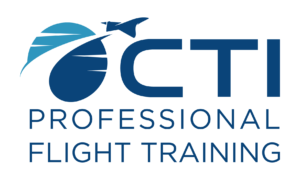Most Common Ways Students Fail a Check Ride
The check ride is the final step to becoming a certified pilot. There’s a lot of pressure and many things to remember going into your check ride. The list of details to study and maneuvers to practice can make your check ride prep feel overwhelming. Mistakes happen when you’re nervous. Knowing the most common reasons students fail their check rides can give you perspective and ease your nerves. Let’s take a look.
Not Enough Training Hours Logged
One of the most common check ride problems is a paperwork problem. The first thing an examiner does is review your logbook and flight times to see if you’ve met the minimum requirements. You and your instructor should have met the specific requirements for the certificate being sought. If you overlook something then your check rides end before it even begins.
Airworthy Aircraft
Know that an examiner will not stop into an aircraft that is not airworthy. Make sure your airplane is up to date with all inspections. More than a few check rides have been canceled and rescheduled because the aircraft is not deemed airworthy.
Failing to Use Checklists
Failing to use checklists, or using them casually, communicates to the examiner that you will ignore the rules for convenience’s sake. Even if you’re capable of safely conducting the flight without a checklist, the lack of checklist use might be enough for your examiner to feel unsafe and deem you an unsafe pilot. Use your checklist!
Failed Stall Correction
Stalls, spins, and loss of control accidents are the most common cause of general aviation accidents. A stall is potentially the most important maneuver to avoid and recover from. If you struggle with them, get help on them before your check ride. An improper stall recovery procedure is a guaranteed failure on any check ride.
Botching Your Landing
Many accidents occur during the landing phase of flight. The go-around is a very important maneuver to master for your check ride. If you screw up your go-around by bringing the flaps up before adding power, for example, that could be enough to fail your check ride. Make sure your go-around is perfect before your check ride.
Simulated Emergency Approach Failure
To make sure you’ll handle a real-life emergency well, your examiner will want to see that you can pull off an off-airport landing if necessary. Overshooting or undershooting the landing spot, not obtaining the best glide speed, not turning directly toward your landing spot, or delaying the emergency landing checklist will lead to a check ride failure.
Conclusion
Whether you’re getting your license for recreational use or will become a commercial pilot, choosing a qualified flight school makes all the difference in time and money spent. Come visit our Florida campus or Tennessee campus. You can request a tour and see all that CTI has to offer our students.
